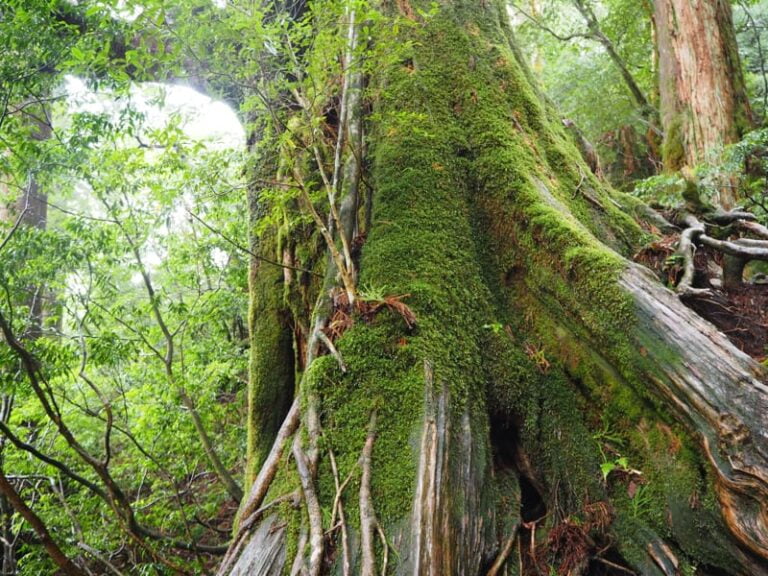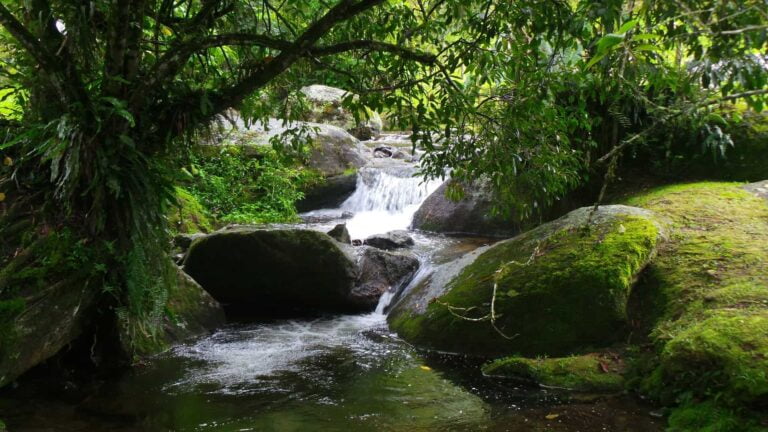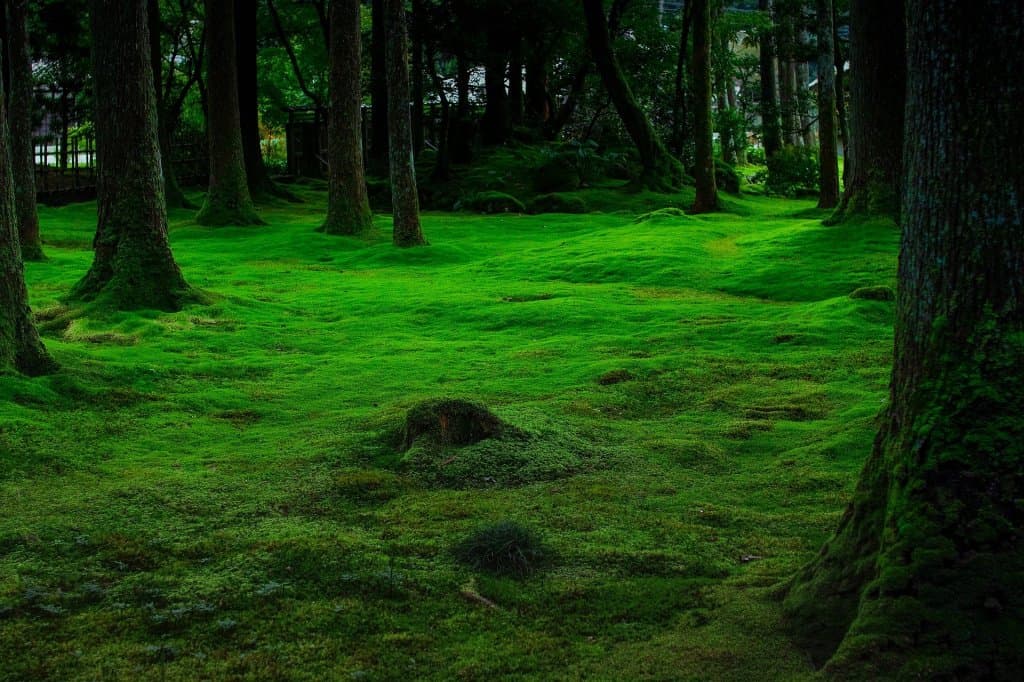Shinrin Yoku - The Practice of Forest Bathing
“The forest can bring you back to health and life, and you will want to protect it in turn.”
– Qing Li
Japan is a forest nation. Trees cover two-thirds of the country. The practice of shinrin-yoku, also known as forest bathing, originated here as people began to discover the positive effect that these forests were having on their lives.
Forest bathing is the simple practice of walking in the forest to feel healthier, happier and rejuvenated. It started to popularise in the early 1980s – some of the earliest expeditions took place on Yakushima Island. The island feels otherworldly and almost pre-historic. Removed from time completely. As more people visited this place, they began to realise that the effects it had on them were long-lasting. Beyond what should be expected. The inspirational surroundings improved people’s mood and boosted their energy.

Jomon Sugi
Yakushima is home to ‘Jomon Sugi’, one of the oldest trees on the planet. This ancient cedar is estimated to be at least 2000 years old, but it could be two or even three times older than that. Throughout time, trees like this have inspired stories and entire religions. In the Japanese religion Shinto, it’s believed that nature contains millions of spirits in the ground we walk and the air we breathe.
Japanese folk stories refer to beings known as ‘kodama’. These deities are said to inhabit trees like Jomon Sugi and cast curses upon those who try to cut them down. Perhaps one of the reasons why this tree has stood the test of time.
Tokyo is one of the most crowded cities in the world, but drive for just an hour outside the city and you’ll soon enter Japan’s incredible national parks. As Tokyo’s population continues to rise, these parks remain as tranquil as ever. The towering cedar trees on display are the Eastern equivalent to the giant redwood. These huge trees house the likes of the pygmy woodpecker and bush warbler. Dwarfed by their surroundings, these birds may be difficult to spot – but you’ll certainly hear them. The famous Japanese cherry blossom trees bloom in spring, and tourists visit from around the world to enjoy the spectacular white and pink blossoms on display. It’s natural to assume that trees like these can improve our wellbeing in a tangible way, so let’s examine why this might be.
Nature Therapy
Being outdoors and embracing nature can help with sleep and relaxation. It’s only recently that data has started to show the benefits of nature therapy. Studies have shown that shinrin-yoku can help to boost your immune system and reduce your blood pressure. Changing your surroundings can in turn help you change your mindset. You might be working from home and can’t seem to concentrate, or perhaps you’ve had a hectic day and need to relax.
Walking amongst nature for just twenty minutes is a simple way to change the scenery and potentially change your way of thinking too.

There are measurable cognitive advantages to spending time in natural settings. Studies have shown this process can boost an individual’s problem-solving abilities and creativity by up to 50%.
Playing in the Dirt
One of the suggested reasons as to why forest bathing works is due to the presence of plant chemicals known as phytoncides. These are natural oils found in the air, expelled by trees as part of their defence system. Everyone is aware of the smell of freshly cut grass, but what you may not know is that smell is the grass attempting to heal itself from lawn-mower related injuries. It also acts as a warning signal – a kind of chemical communication of an incoming threat. Trees do a similar thing, these oils are constantly released to combat bacteria, fungi and other pests. Often present in evergreens, they are what give pine needles their distinctive scent. Research suggests that these chemicals can reduce stress and fatigue as well as diffuse tension and anxiety.
Another reason we may find ourselves in a better mood after a venture in the forest, is due to the presence of mycobacterium vaccae in the soil. This bacteria’s beneficial effects were discovered accidentally in 2004. Many claim that these bacteria have a similar effect on them to antidepressants and that they can help improve quality of life. Your parents were wrong all along, digging around in the soil is good for you! This could be why gardeners find the activity so therapeutic.

Resetting
Nature has a way of resetting us. Many writers have claimed going for a walk can cure their writer’s block. Problems seem easier to solve. Issues no longer seem to be as troubling once we embrace nature. What’s more, we start to feel more gratitude as we connect with the environment. The same thing happens after watching a nature documentary. Viewers often feel more thoughtful and charitable as a result – and that can only be a good thing.
You don’t need to visit Japan to try forest bathing for yourself. Find some nearby woodland and give it a go. Here are some of the ways you can make the most of your visit to the forest:
Try it Yourself
Those who practice forest bathing advise you against bringing a phone or camera. Try not to walk ‘through’ the forest. It isn’t something to be passed through on the way to somewhere else. The forest is your destination, not your journey. You’re advised to walk ‘aimlessly and slowly’. Go wherever your senses take you – just don’t get lost! Try and acknowledge all five of your senses. Let nature wash over you in the following ways: Absorb the delightful birdsong. Feel the crunch of twigs under your feet. Admire the trees as they tower over you. Smell the cherry blossoms as you breathe in and taste the fresh air. Your mood will improve no end.
Even the sceptics reading this cannot deny the benefits of a cardio workout and vitamin D via sunlight. The more trees that surround you, the more oxygenated the air is, but don’t worry if you live in an urban environment – there is always nature to be found. You may not live near fields and forests but there’s nothing wrong with a park and a few trees. Even the concrete jungle of Manhattan has Central Park. And pigeons still count as birds (only just). The concept may have originated in Japan, but it is now practiced around the world. Unless you live in the desert or near one of the poles, there is probably a forest nearby where you can start to practice this in some form.
Restored and Refreshed

Shinrin-yoku doesn’t need to be a two-hour escape into a picturesque Japanese forest. You don’t have to hug trees or smile at butterflies. Just appreciate what’s around you and see what happens – then teach future generations to do the same.



